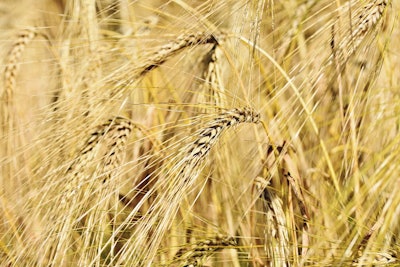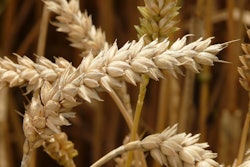
Here in Kansas, where so much wheat is grown, it is bone dry.
Just yesterday, I was walking down the lane next to our family’s wheat ground with two of my sons, and while we talked about a lot of things, the drought did make it in the way to the conversation.
It had been a long time since it had been that dry, or that I had seen the wheat look that poorly. It’s probably been at least 10 years, I thought.
Then, after returning from the International Production & Processing Expo (IPPE), I started to catch up on some of my emails that I felt could wait until my return. And one of them was a link to a USDA Radio Report, titled “When was the Last Time Winter Wheat Condition Ratings Were So Low?”
And my hunch was correct.
“The last time we saw winter wheat conditions as low as what we’re seeing now, you’ll have to go back a decade, to the drought of 2012-13,” USDA meteorologist Brad Rippey said.
Rippey referenced the last national report issued in 2012 rated more than 25% of that year’s wheat crop as “very poor to poor,” whereas the last report issued in 2021, in November, rated 23% of the wheat crop as such.
A number of factors have been in play.
“We’ve had numerous report of poor wheat stands, crops that have not emerged at all, and also we’ve had some wind and dust storms that have blown out soils, so it’s a tough situation up and down the plains for the wheat crop,” Rippey said.
I vividly remember that earlier drought, not only from the way the crops looked, but also how the pastures and even lawns look.
And in my reporting for WATTPoultry.com in late 2012 and 2013, I can remember a recurring theme of low supplies of corn and soybeans as well, which of course had an impact on feed prices. Dale Rodman, who was then the Kansas secretary of agriculture, even recommended that farmers plant less soybeans and corn and instead plant sorghum because it didn’t require as much water.
The most recent forecasts are calling for some precipitation in the Wichita area in few days. We can only hope there is some accuracy in that forecast, because we don’t need a repeat of that last drought.
















![Logan And Jerry Fitch[1]](https://img.feedandgrain.com/files/base/wattglobalmedia/all/image/2023/05/Logan_and_Jerry_Fitch_1_.6470faf6bcc37.png?auto=format%2Ccompress&fit=crop&h=112&q=70&w=112)